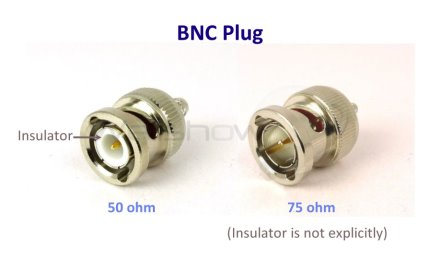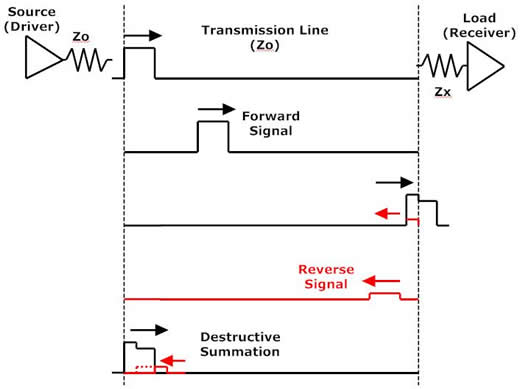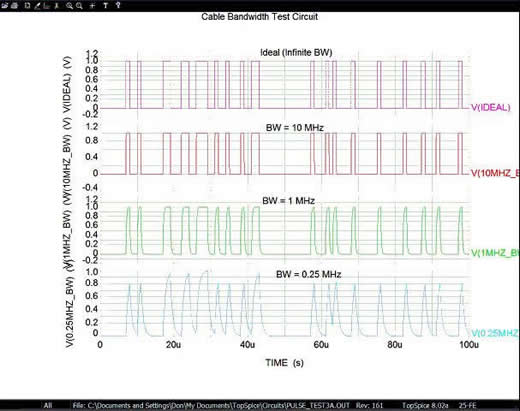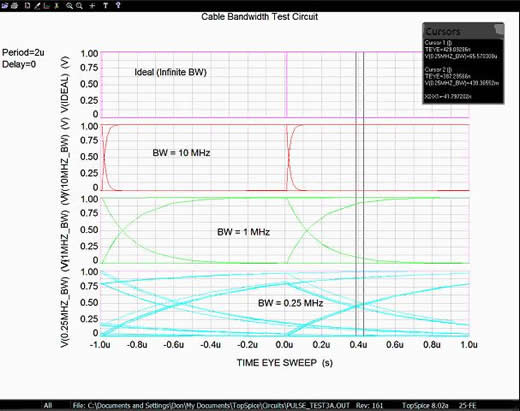- AccurateRip
- Acoustid
- AES/EBU
- AirPlay
- Amplifier
- aptX
- Audio file formats
- ASRC
- AVB
- Bit perfect jitter
- Bits: 16 or 24
- Bit perfect playback
- Bitrate
- Bluetooth
- Burn-in
- BWF
- Cables
- CDtext
- Chromecast
- Clipping
- Clock
- Codec
- Compression
- CRC
- Crossover
- Cue sheet
- DAC
- Damping
- DASH
- Digital
- Digital Room Correction
- Dither
- DLNA
- Drivers
- DoP
- DSP
- EBU R128 (loudness)
- FFT
- FireWire
- Freedb
- Gapless playback
- Generation loss
- HDMI
- Headphone listening
- Hearing
- Hires recording
- Homeplug
- I2S
- ID3
- Inter sample peak
- LDAC
- Linearity (DAC)
- Memory playback
- Music Server
- OCF
- OFC
- PCM
- Perception
- RAID
- ReplayGain
- Ripping
- RFI
- RIAA
- Router
- Sampling, up and over
- Sample Rate Conversion
- Speakers
- S/PDIF
- Storage
- Sync
- Tagging
- Toslink
- Transcoding
- UAA
- Units
- UPnP
- USB
- VST
- WiFi
- WiSA
Digital Cables
Sounds like nonsense, there are a bunch of electrons traveling through a wire and electrons don’t know if they are 'analog' or 'digital'. In fact, all electrical signals are analogue.
However, the digital signal is different; it is a pulse train, a square wave instead of a sine.
As everything is finite in our universe, square waves don’t exist.
Transition from logicalone1 to logical zero is a matter of going from e.g. 4V to 0V and this requires time.
There is always a rise/fall time and the edges will be rounded. This generates a series of harmonics of the base frequency. Our square wave is a kind of trapezium with rounded edges.
Traveling through the cable, the shape will change.
Small changes will make it harder for the receiver to detect the exact moment the rise or fall is happening. This will induce jitter.
If this change becomes too big, the receiver will not be able to reconstruct the logical 1’s and 0’s properly.
Depending on the characteristic impedance of the cable, the capacitance of the cable, and the impedance match between the source and load devices, the corners of the square wave will round off to a greater or lesser degree, and the "flat" portions of the wave will become uneven as well. This makes it harder for the receiving circuit to accurately identify the transitions and clock the incoming signal. The more degradation in the signal, the harder it is for the receiving device to accurately measure the content of the bitstream.
Blue Jeans Cable
Impedance
If you need to connect to devices ‘digital’ you better use a cable in accordance with the specifications. This is a matter of having a cable with the right impedance with little variation over the relevant frequency range.
SPDIF needs a 75 Ohm cable, AES/EBU 110 Ohm, etc.
You can’t measure this impedance using a conventional volt-ohm meter.
Well you can but you will measure something close to zero.
This is the DC impedance
These standards refer to the characteristic impedance.
This is the AC impedance of the transmission line and is defined as:

L=inductance per unit length
C=capacitance per unit length
Impedance matching
An audiophile will talk cables and the tremendous impact they have on sound quality.
An engineer will talk impedance matching.
If the impedance doesn't match, part of the signal will bounce at the receiver.
This will interact with the next incoming pulse.
This is why a BNC connector is preferred over a RCA for SPDIF.
The BNC has a matching impedance, RCA not.
Don Herman has more.
BNC
You need a true 75 Ohms cable for SPDIF.
Best is to terminate it with true 75 Ohm connectors.
If you don’t you still have an impedance mismatch.
RCA connecters are not 75 Ohm.
That is the reason why BNC connectors are recommended.
Some go as far as to change the RCA receptacle on the DAC by a BNC and buy a cable terminated with BNC.
Be careful because many BNC connectors are 50 instead of 75 Ohm!

Wellshow - BNC Connector Introduction
Bandwidth
If a cable has insufficient bandwidth (or it is very long) the block pulse will be distorted.
Plot the pattern of each time step on top of each other and you get the eye-diagram.
Again, Don Herman has more.
Quarter wavelength
In practice, as digital signals are pretty robust, using an 'analog' cable, one with the wrong impedance, might work as well.
A rule of the thumb is the quarter wavelength. If the analogue cable is shorter than ¼ of the wavelength, it will probably work.
The S/PDIF part is simple: sample rate * word length * nr of channels.
As it is bi-phase encoded, the real rate is the double.
According to Hinton, the wave length is about sine wave and S/PDIF is a blockpulse.
As an approximation, the 7'th harmonic is used.
| Sample rate | 44,1 | ||
| bit | 32 | 1411,2 | |
| channel | 2 | 2822,4 | |
| Bi-phase encoded | 2 | 5644,8 | Mhz |
| 5644800 | Hz | ||
| 7 th harmonic | 7 | 39513600 | Hz |
| Speed vacuum | 299.792.500 | ||
| Propagation | 0,7 | ||
| Speed cable | 209854750 | m/s | |
| Wave length | 5,31 | m | |
| Quarter Wavelength | 4 | 1,33 | m |
- Reflections and DACs - Don Herman
- The Sound of a Digital Cable: Bandwidth and Jitter - Don Herman
- Mytek192DSD Input Sockets - AudioAsylum
- SPDIF - ePanorama.net
- Digital audio primer - Hinton
- Coaxial cable - WikipediA




